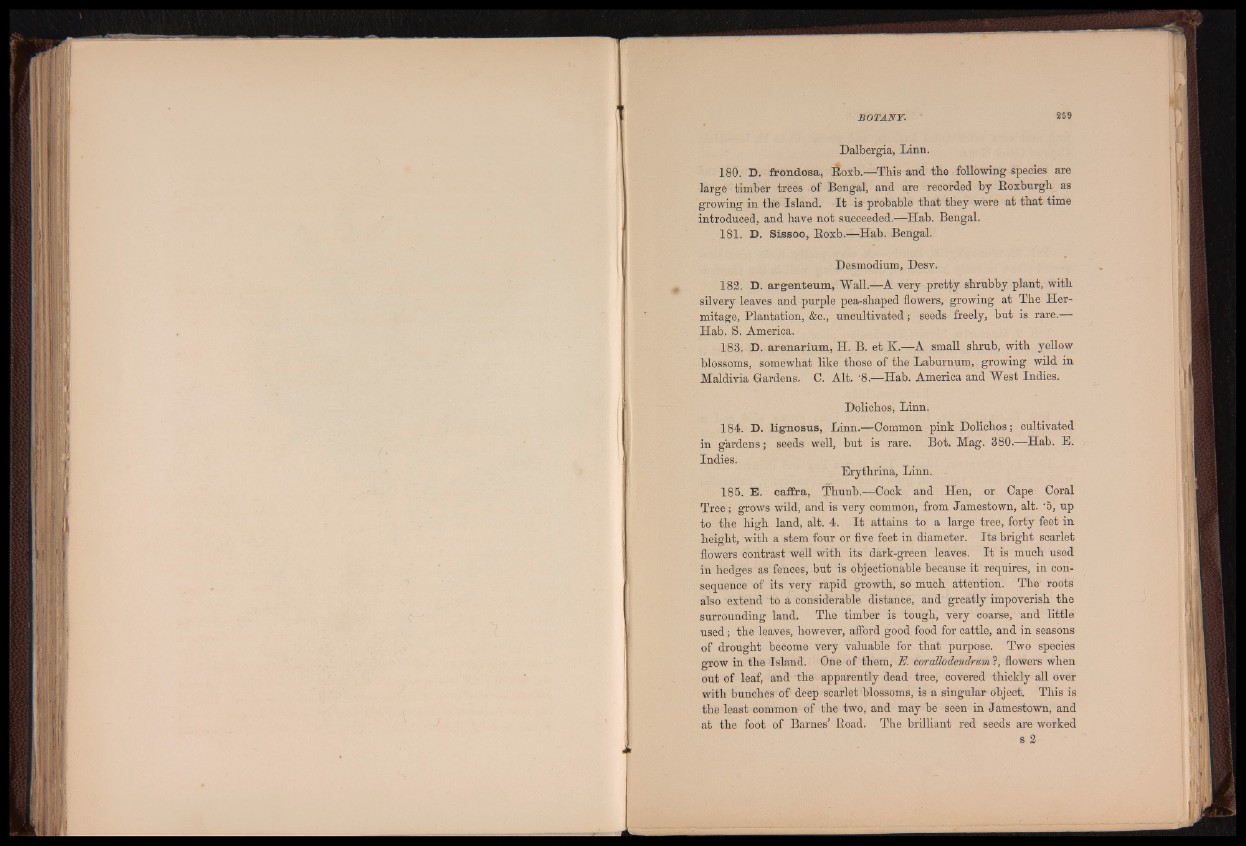
Dalbergia, Linn.
180. D . f r o n d o s a , Roxb.—This and the following species are
large timber trees of Bengal, and are recorded by Roxburgh as
growing in the Island. I t is probable that they were at that time
introduced, and have not succeeded.—Hab. Bengal.
181. D . S is so o , Roxb.—Hab. Bengal.
Desmodium, Desv.
182. D . a r g e n t e u m , Wall.—A very pretty shrubby plant, with
silvery leaves and purple pea-shaped flowers, growing at The Hermitage,
Plantation, &c., uncultivated; seeds freely, but is rare.—
Hab. S. America.
183.. D . a r e n a r iu m , H. B. et K.—A small shrub, with yellow
blossoms, somewhat like those of the Laburnum, growing wild in
Maldivia Gardens. C. Alt. '8.—Hab. America and West Indies.
Dolichos, Linn.
184. D . l ig n o s u s , Linn.—Common pink Dolichos; cultivated
in gardens; seeds well, but is rare. Bot. Mag. 380.—Hab. E.
Indies.
Erythrina, Linn.
185. E . c a f f r a , Thunb.—Cock and Hen, or Cape Coral
Tree; grows wild, and is very common, from Jamestown, alt. '5, up
to the high land, alt. 4. I t attains to a large tree, forty feet in
height, with a stem four or five feet in diameter. Its bright scarlet
flowers contrast well with its dark-green leaves. I t is much used
in hedges as fences, but is objectionable because it requires, in consequence
of its very rapid growth, so much attention. The roots
also extend to a considerable distance, and greatly impoverish the
surrounding land. The timber is tough, very coarse, and little
used; the leaves, however, afford good food for cattle, and in seasons
of drought become very valuable for that purpose. Two species
grow in the Island. One of them, E. eoraUodendrum ?, flowers when
out of leaf, and the apparently dead tree, covered thickly all over
with bunches of deep scarlet blossoms, is a singular object. This is
the least common of the two, and may be seen in Jamestown, and
at the foot of Barnes’ Road. The brilliant red seeds are worked
s 2